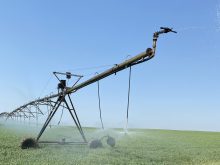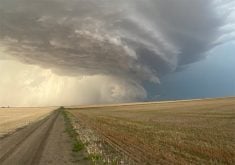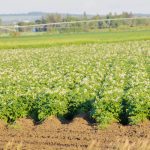Producers considering shifting to a spring calving schedule must weigh the convenience against potential lower returns.
“Some advantages of early-spring calving are the warmer, longer days,” said Jim Armstrong, livestock agrologist with Saskatchewan Agriculture in Tisdale.
“Cows would also calve on grass instead of in a corral, which should reduce the risk of scours.”
Cows calving on grass require the best nutrition just when the grass quality and quantity peak, and they winter on lower quality and quantities of feed.
“The largest negative with spring calving is smaller calves to sell in the fall. Because many beef producers are also grain farmers, checking cows at seeding time is also burdensome.”
Read Also

Rented farmland jumps 3.4 million acres in Saskatchewan and Alberta
Farmland rented or leased in the two provinces went from 25.7 million acres in 2011 to 29.1 million in 2021, says Census of Agriculture data.
To give producers a clearer picture of spring-versus-winter calving, Armstrong compared two calving dates for a beef herd composed of 1,300-lb. cows.
One scenario had the cows calving in February, the other in May. All calves were theoretically sold in October. The comparison looked at feed for the cow and her calf.
The model showed a February-born calf would consume 40 percent as much grass as its mother over the summer. A May-born calf would consume about 20 percent of the grass used by its mother.
If a pasture was used from mid-May to October, the stocking rate for May cow-calf pairs, compared to February cow-calf pairs, can be increased by 10 percent on the same land base. Or, in the case of May-calving cows, the pasture could carry the same number of cows but grazing could extend into late fall.
Armstrong said the February-calving cows require more and better quality feed than the May-calving cows. For example, the February-calving cows need about one-half tonne of hay and 12 bushels of barley more than their May-calving counterparts.
He said a research project in Eastern Canada showed summer calves weighed seven pounds less than winter calves at birth. This means fewer assisted births and less labor required to calve the cows in spring and summer.
“When the dust settled, my model showed the returns from the February calves were $20 more than the returns from the May calves.”
Armstrong said individual producers will need to carefully pencil out their costs, which should include equipment, manure removal and calving facility costs, to see which date would give them the best returns. In addition to a change in calving date, producers might measure the benefits of backgrounding and early weaning with both calving dates.
“If winter calving is getting them down, producers should figure out their present costs and the potential of later calving before the start of the next breeding season,” said Armstrong.














